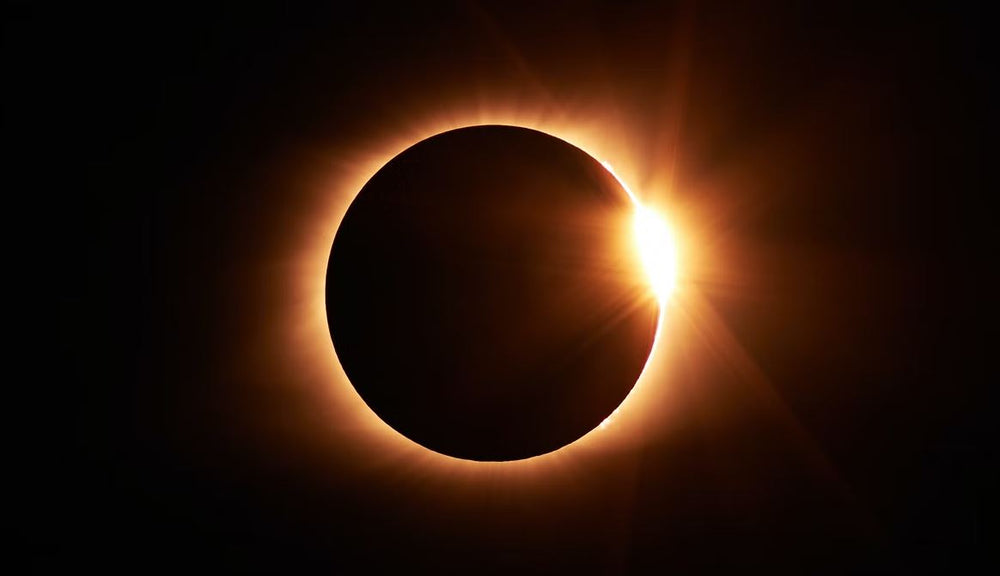Title: How to Photograph a Solar Eclipse: Tips and Techniques for Capturing this Amazing Astronomical Event
A solar eclipse is a rare and awe-inspiring astronomical event that occurs when the moon passes between the sun and the earth, casting a shadow on the earth's surface. It's a unique opportunity to witness the wonders of our solar system and capture stunning photographs. In this blog post, we'll explore how to photograph a solar eclipse, including tips and techniques for capturing this amazing event.
Understanding Solar Eclipses
A solar eclipse occurs when the moon passes between the sun and the earth, casting a shadow on the earth's surface. There are three types of solar eclipses: total, partial, and annular. A total solar eclipse is the rarest and most spectacular type, during which the sun is completely obscured by the moon, revealing the sun's corona, or outer atmosphere.
Preparing for the Eclipse
Location, Location, Location
One of the most important considerations when photographing a solar eclipse is location. You'll need to choose a location that provides an unobstructed view of the sun and the eclipse. This may involve traveling to a specific location or finding a spot with a clear view of the horizon.
Safety First
It's essential to take safety precautions when photographing a solar eclipse. Never look directly at the sun without proper eye protection, as this can cause permanent eye damage. Use special solar filters on your camera or telescope to safely capture the eclipse.
Equipment and Settings
To capture a solar eclipse, you'll need a camera with manual exposure settings, a tripod, and a solar filter for your lens. Use a low ISO setting and a fast shutter speed to capture the movement of the eclipse.
Photographing the Eclipse
Timing is Everything
Timing is everything when photographing a solar eclipse. You'll need to time your shots carefully to capture the eclipse at its most dramatic moments, such as during totality. Use a timer or remote shutter release to reduce camera shake and ensure a sharp image.
Experiment with Different Compositions
When photographing a solar eclipse, experiment with different compositions to create unique and interesting images. Consider including foreground elements, such as trees or buildings, to add depth and interest to your photos.
Capture the Environment
The environment surrounding the eclipse can also provide unique photo opportunities. Capture the reactions of the people around you, or the changing light and shadows as the eclipse progresses.
Bracket Your Shots
Bracketing your shots involves taking multiple exposures at different settings to ensure that you capture the eclipse at its most dramatic moments. This can help to ensure that you capture the best possible image and have more options to choose from when processing your photos.
Edit Your Photos Carefully
After the eclipse, it's time to process and edit your photos. Careful editing can help to bring out the details and colors of the eclipse, while over-editing can create an unnatural look. Use a light touch when adjusting the exposure, color balance, and contrast to create a final image that accurately represents the eclipse.
Share Your Photos
Finally, don't forget to share your photos of the eclipse with others. Share them on social media or with friends and family, and consider entering them into photography contests or submitting them to astronomy publications.
Bonus Tips
Here are some bonus tips to help you capture the best possible photos of a solar eclipse:
- Consider using a telephoto lens to capture close-up shots of the eclipse.
- Use a polarizing filter to reduce glare and enhance contrast.
- Bring extra batteries and memory cards to ensure that you don't run out of power or storage space during the eclipse.
- Use a tripod or other stabilizing device to reduce camera shake and ensure sharp images.
- Take advantage of different lighting conditions to capture unique and interesting photos, such as during sunrise or sunset.
By following these tips and techniques, you'll be able to capture stunning photos of a solar eclipse and create lasting memories of this amazing astronomical event.
Conclusion
Photographing a solar eclipse is a unique and rewarding experience that requires careful planning and preparation. Choose a safe and unobstructed location, take proper safety precautions, and use the right equipment and settings. Time your shots carefully, experiment with different compositions, and bracket your shots. Edit your photos carefully to create a final image that accurately represents the eclipse, and don't forget to share your photos with others. With the right techniques and preparation, you can capture stunning photos of this amazing astronomical event and create lasting memories of this incredible experience.
More about photography:
- How to Photograph The Moon
- How to Photograph The Milky Way
- How to Photograph Northen Lights
- How to Photograph Stars
- How to Photograph Planets
- How to Photograph Jupiter
- How to Photograph Star Trails

